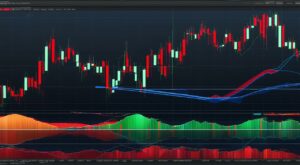Your cart is currently empty!
Forex Reserves by Country: Understanding, Management, and Implications

Affiliate Disclaimer: This post may contain affiliate link or links
Forex reserves by country: Foreign exchange reserves are a critical aspect of a country’s economic stability and financial strength. These reserves serve as a safety net and provide a buffer against currency fluctuations and external shocks.
Contents
In this comprehensive guide, we will delve into the concept of forex reserves, explore their significance, examine the factors influencing their growth.
Analyze their allocation and composition, track the statistics and trends, and highlight the challenges and best practices in managing these reserves.

Understanding Forex Reserves
What are Forex Reserves?
Forex reserves, also known as foreign exchange reserves, refer to the assets denominated in foreign currencies that a central bank or monetary authority holds.
These assets may include cash, bank deposits, government securities, gold, and other internationally accepted reserve assets.
Forex reserves serve as a tool for a country to manage its exchange rate, maintain liquidity, and meet its international obligations.
Role and Function of Forex Reserves
Forex reserves play various critical roles in a country’s economy. Firstly, they enable a nation to stabilize its currency by intervening in the foreign exchange market when needed.
Secondly, these reserves act as a cushion to protect against external shocks, such as economic crises or sudden capital outflows.
Moreover, forex reserves contribute to maintaining confidence in the economy and ensuring smooth international transactions.
Purpose and Importance of Forex Reserves
The primary purpose of forex reserves is to provide confidence and stability to domestic and foreign investors in a country’s economic policies.
Additionally, these reserves serve as a means to manage the exchange rate, support domestic monetary policy, and ensure sufficient liquidity to meet external obligations.
The importance of forex reserves becomes particularly evident during times of economic uncertainty or financial market turmoil.
Advantages and Disadvantages of Forex Reserves
Forex reserves offer several advantages to a country. They provide a cushion against economic shocks, enhance financial stability, and facilitate global trade and investment.
Additionally, having substantial forex reserves can instill confidence among investors and rating agencies, attracting foreign capital and fostering economic growth.
However, there are also some disadvantages associated with maintaining excessive forex reserves, such as the opportunity cost of holding low-yielding assets and the potential for overdependence on foreign currencies.

Factors Influencing Forex Reserves
Several factors influence the growth and dynamics of forex reserves in different countries. Let’s explore some of the key factors in detail:
Foreign Exchange and Currency
Foreign exchange rates significantly impact a country’s forex reserves. A stronger domestic currency increases the value of the reserves, while a weaker currency can lead to a decline in reserves.
Factors such as exchange rate policies, market interventions, and capital account openness all influence the interaction between forex reserves and currency dynamics.
Balance of Payments
The balance of payments, comprising the current account, capital account, and financial account, plays a crucial role in a country’s forex reserves.
A surplus in the current account, indicating higher exports or lower imports, contributes positively to reserves.
Conversely, a deficit in the current account, resulting from higher imports or lower exports, puts pressure on reserves.
Monetary Policy and Inflation
Monetary policy decisions, such as interest rate adjustments, impact a country’s forex reserves. Higher interest rates can attract foreign investment, leading to increased reserves.
Inflation levels also affect reserves, as higher inflation erodes the purchasing power of a country’s currency, potentially triggering capital outflows and depleting reserves.
Gold Reserves and Diversification
Gold holdings form a significant component of a country’s forex reserves. Central banks often acquire gold as a safe haven asset and to diversify their reserves.
The price fluctuations of gold can influence the value of reserves. Diversification across different currencies and asset classes contributes to risk reduction and prudent reserve management.
Debt, Imports, and Exports
The level of external debt affects forex reserves, as countries with higher debts need larger reserves to meet their obligations. Moreover, imports and exports play a crucial role in determining reserves.
Countries heavily reliant on imports may experience depletion of reserves, whereas countries with robust export sectors can accumulate substantial reserves.
GDP and Economic Growth
A country’s gross domestic product (GDP) and its growth rate are factors influencing forex reserves. Strong economic growth often leads to increased merchandise exports, contributing to reserve accumulation.
Conversely, economic downturns can put pressures on reserves, especially during times of reduced export demand and decreased foreign investment.
Stability and Development
Political stability, effective governance, and sound economic policies contribute to economic stability and forex reserve accumulation.
Countries with a stable political environment, strong institutions, and favorable business conditions are more likely to attract foreign capital and accumulate reserves.
Economic development and structural reforms can also have a positive impact on reserve levels.

Composition and Allocation of Forex Reserves
Types of Assets in Forex Reserves
Forex reserves consist of various assets, each serving different purposes. The most common types of assets include:
- Foreign Currency Deposits: These are liquid holdings of foreign currencies, typically invested in major reserve currencies like the US Dollar, Euro, or Japanese Yen.
- Government Securities: Central banks often hold government bonds and treasury bills of other countries. These investments offer safety and generate income for the reserves.
- Gold Reserves: Gold is a highly valued asset, providing diversification and acting as a hedge against inflation and currency devaluation.
- Special Drawing Rights (SDRs): SDRs are an international reserve asset created by the International Monetary Fund (IMF) and serve as additional liquidity in times of need.
Allocation of Forex Reserves
The allocation of forex reserves varies across countries, depending on their specific needs and economic circumstances.
Factors such as trade patterns, currency pegs, investment strategies, and risk management influence the allocation decisions.
Central banks strive to balance the objectives of liquidity, safety, and return on investment when allocating reserves among different assets and currencies.
Valuation and Performance of Forex Reserves
The valuation of forex reserves is crucial to determine their worth in a country’s domestic currency. Fluctuations in exchange rates and asset values can impact the value of reserves.
The performance of reserves is evaluated using various metrics, such as returns on investments, capital gains or losses, and risk-adjusted measures.
Risk and Return associated with Forex Reserves
Forex reserves carry both risks and potential returns. Holding reserves in low-yielding assets, such as government bonds, can limit returns.
However, these assets provide stability and liquidity. Higher-yielding investments, such as corporate bonds or equities, can generate more significant returns but come with increased risks.
Central banks carefully manage the risk-return trade-off to balance the objectives of safety, liquidity, and profitability.

Tracking Forex Reserves
Sources for Forex Reserves Data
Various sources provide reliable and up-to-date information on forex reserves. National central banks, international organizations like the IMF, and financial data providers offer access to reserve data for different countries.
These sources present rigorous statistical analysis, historical trends, and forecast data that help assess and compare forex reserves by country.
IMF and Forex Reserves
The International Monetary Fund (IMF) plays a vital role in monitoring and assessing global forex reserves. It provides guidelines for reserve management and conducts analyses to track the adequacy and composition of reserves globally.
The IMF produces reports, publications, and data that contribute to understanding trends and policy implications related to forex reserves.
Statistics, Charts, and Graphs for Forex Reserves
Statistical data, charts, and graphs enhance our understanding of forex reserves dynamics.
They visually represent the growth, allocation, and trends of reserves over time, offering valuable insights into a country’s economic strength and reserve management practices.
Comparison of Forex Reserves by Country
Comparing forex reserves across countries allows for benchmarking and assessing relative strengths.
Statistics on forex reserves rankings and comparisons offer valuable insights into how countries manage their reserves, their diversification strategies, and the relative size and stability of their economies.

Determinants of Forex Reserves
Several determinants influence the size and growth of forex reserves in individual countries. Understanding these determinants helps shed light on a country’s reserve management practices and sheds insight into their economic policies.
Let’s explore some key determinants:
Factors Influencing Forex Reserves by Country
The level and growth of forex reserves vary significantly across countries due to different economic, financial, and policy factors.
Factors such as trade patterns, investment flows, exchange rate regimes, and capital account openness all affect the size and dynamics of a country’s forex reserves.
Drivers and Impact on Forex Reserves
Various drivers impact the growth or decline of forex reserves in a country.
These include trade balances, foreign direct investment, external debt dynamics, currency interventions, and capital flows.
Changes in these drivers can create significant fluctuations in reserves, influencing a nation’s economic stability and exchange rate management.
Implications of Forex Reserves
Having adequate forex reserves provides various implications for a country’s economy. Firstly, it helps maintain exchange rate stability, minimizes currency depreciation risks, and supports international trade.
Moreover, sufficient reserves foster investor confidence, attract foreign direct investment, and contribute to overall economic growth.
In times of economic crises or external shocks, reserves act as a cushion, enabling countries to navigate turbulent periods with greater resilience.

Case Studies: Forex Reserves by Country
To gain a deeper understanding of forex reserves dynamics, it is essential to analyze specific cases. Let’s take a closer look at three significant global economies:
Forex Reserves US
Global economic stability hinges significantly on the status of a country’s foreign exchange reserves, and this holds particularly true for the United States, the country with a dominant currency that plays a central role in international finance.
The U.S. Forex Reserves consist of various foreign currencies, especially Euros, Yen, and Pounds, which are held by the Federal Reserve.
These assets serve multiple purposes including providing liquidity in times of an economic crisis, influencing currency exchange rates, and ensuring that the country can meet its international obligations.
In times of economic uncertainty or when international balances are not in favor of the US, having robust Forex reserves can act as a buffer.
Additionally, they are a critical component in the maintenance of confidence in the U.S. financial system—any significant change in these reserves can send ripples across global markets, exemplifying the interconnectedness of modern economies.
Forex Reserves India
India holds substantial forex reserves, driven by factors such as a large goods and services export sector, foreign direct investment, and a robust current account balance.
The Reserve Bank of India actively manages these reserves to stabilize the rupee, control inflation, and provide liquidity in times of need.
Forex Reserves China
China boasts the world’s largest forex reserves, primarily due to its trade surplus, large-scale exports, and foreign direct investment.
The People’s Bank of China deploys various strategies to manage these reserves, including diversification, currency interventions, and investments in global bonds and equities.
Forex Reserves Japan
Japan maintains sizable forex reserves accumulated through trade surpluses and capital inflows.
The Bank of Japan monitors these reserves to support the yen’s stability, facilitate international trade, and enhance Japan’s financial security.
Investments in foreign government securities and diversified assets help manage these reserves effectively.
Forex Reserve Bangladesh
Having substantial Forex reserves is crucial for a country like Bangladesh, as it supports import payments and bolsters investor confidence in the country’s economy.
Recently, Bangladesh’s Forex reserves have seen fluctuations due to various economic factors, including trade deficits, remittance flows, and currency exchange rates.
These reserves not only ensure the stability of the national currency, the Taka, against foreign currencies but also provide a safety net against economic shocks.
The central bank plays a pivotal role in managing these reserves, using strategies to maintain an optimal balance that supports economic growth while mitigating financial risks.

Best Practices and Challenges in Managing Forex Reserves
Strategies for Managing Forex Reserves
Central banks employ various strategies to manage forex reserves efficiently.
These include diversification across currencies, assets, and investment instruments, active risk management, and periodic portfolio rebalancing.
Additionally, maintaining transparent communication and coordination with relevant stakeholders contributes to effective reserve management.
Policies and Regulations for Forex Reserves
Countries often establish policies, guidelines, and regulatory frameworks to govern reserve management.
These aim to ensure prudence, transparency, and accountability in handling reserves, as well as provide flexibility in responding to economic challenges.
Robust policies and regulations promote effective and sustainable reserve management practices.
Governance and Accountability in Forex Reserves Management
Maintaining good governance and accountability is paramount in managing forex reserves.
Central banks and relevant authorities must act in the best interests of the country, adhering to ethical standards and ensuring proper risk management and reporting.
Effective governance fosters public trust and confidence in reserve management practices.
Challenges and Trends in Forex Reserves
Constantly evolving global economic and financial landscapes present challenges and trends for forex reserve management.
Changing interest rate environments, evolving currency dynamics, geopolitical uncertainties, and evolving conventional and unconventional monetary policies all require adaptability and preparedness.
Staying updated with emerging trends is crucial for effective reserve management.

Countries with Highest Forex Reserves
According to available data, the countries with the highest foreign exchange (forex) reserves include China, Japan, Switzerland, Russia, and India.
These reserves are crucial for maintaining currency stability and managing economic crises. China leads by a significant margin, reflecting its robust export economy and the controlled exchange rate of the renminbi.
Japan and Switzerland follow due to their significant trade surpluses and role as global financial centers. Russia and India have also amassed substantial reserves.
Forex Reserves of Asian Countries
Asian countries possess varying levels of Forex reserves, vital for economic stability and maintaining currency value. Nations like China and Japan hold some of the world’s largest reserves, reflecting their significant role in global trade.
These reserves can be a mix of dollars, euros, and other significant currencies, and they provide a cushion against financial emergencies, help in managing exchange rates, and ensure the countries can meet their international payment obligations.

Conclusion
Forex reserves are a critical component of a country’s economic and financial stability. Understanding their role, composition, allocation, and management practices is essential to assess the strength and resilience of economies.
Through careful management and adherence to best practices, countries can leverage their forex reserves to maintain stability, attract investment, and navigate through economic challenges.
By analyzing country-specific case studies and tracking global trends, policymakers can optimize reserve management strategies.
As economies continue to evolve, the significance of forex reserves by country remains indispensable in today’s interconnected world.
Other related articles
- Trade Report Indicator: Indicator for Forex Traders
- Trend Profiteer Trading System: A Trader’s Must Have
- Quantum Trend Sniper Indicator MT4: Free Download
- German Sniper Indicator: Unveiling its Power
- Mastering MACD Intraday Trend | Indicator Free Download
- Crazy Accurate 5-Days Breakout Strategy: Unlock Success

Joseph Benson, I have been trading forex for more than 15 years now and I am still trading actively, a content writer, an Architect also SEO expert, learn how to trade easily with me.










Leave a Reply